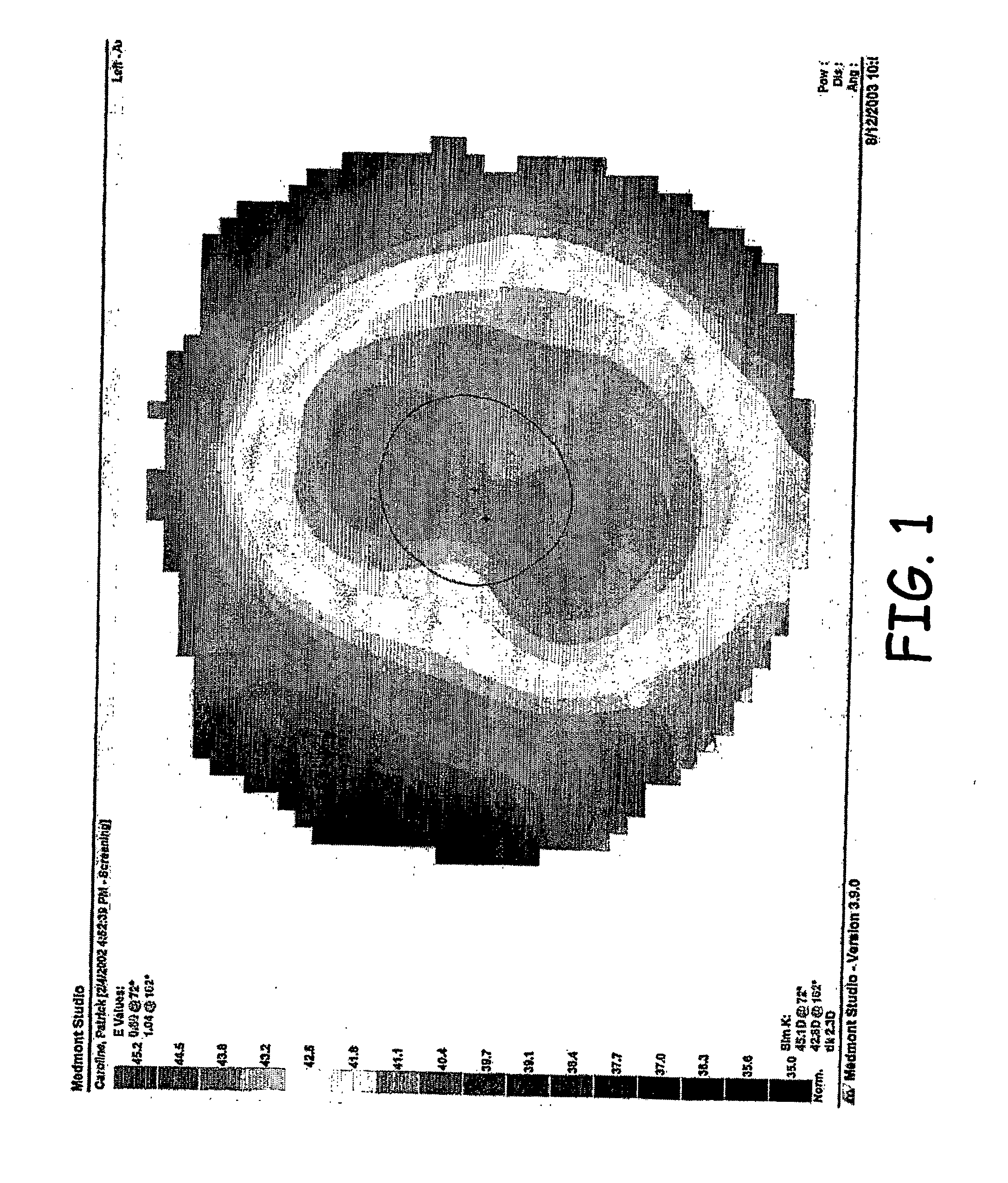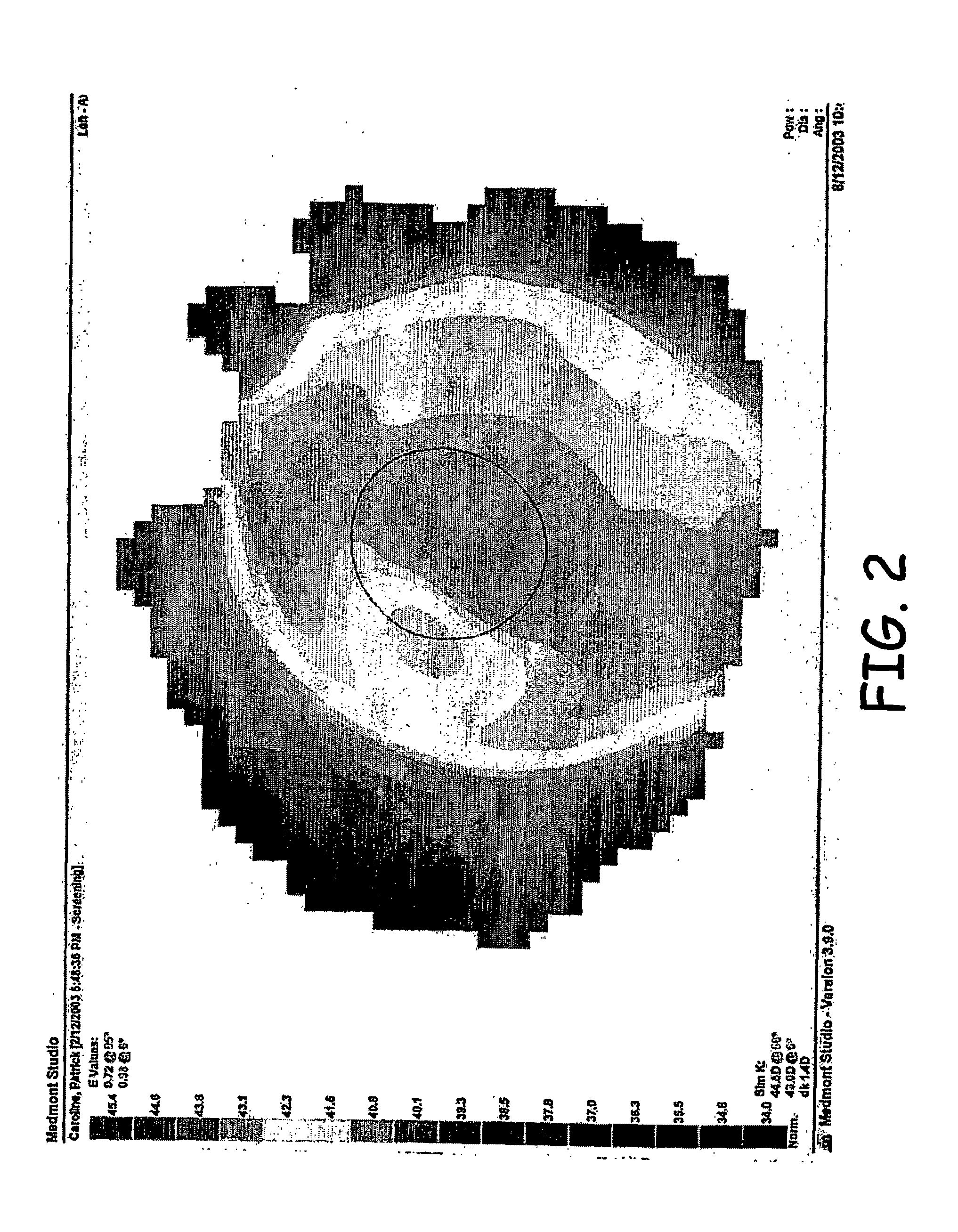Soft Lens Orthokeratology
a soft lens and orthokeratology technology, applied in the field of contact lenses, can solve the problems of unsuitable orthokeratology, uncomfortable wearing of rgp lenses, and blurred retinal images
- Summary
- Abstract
- Description
- Claims
- Application Information
AI Technical Summary
Benefits of technology
Problems solved by technology
Method used
Image
Examples
example
[0030] Treatment zone diameter=5.0 mm [0031] OZD squared (5.0×5.0)=25 mm2 [0032] x target refractive error (−2.50 D)=−62.50 microns [0033] / 3=−20.83 microns [0034] Required Tissue Thickness Change −21 microns
[0035] In the context of corneal reshaping the change in corneal sagittal depth over the treatment zone for a −2.5 D correction is approximately 20 microns. Table 2 describes how the effective refractive change can increase as the treatment zone decreases.
TABLE 2Relationship between treatment zonediameter and refractive change.Treatment Zone DiameterTreatment DepthExpected Rx Change6.0 mm20 microns−1.75 D5.0 mm20 microns−2.50 D5.0 mm20 microns−2.50 D4.0 mm20 microns−3.75 D3.0 mm20 microns−6.75 D
[0036] When the Munnerlyn Formula is applied to contact lens corneal reshaping, the results demonstrate that minimal tissue displacement (approximately 9 microns per diopter) is required to achieve the desired optical result. The formula also helps to clarify the relationship between t...
experimental cases
[0084] The test cases (Table 4) were designed to cover a reasonable range of powers, and a range of elastic moduli spanning those of currently used soft contact lens materials.
TABLE 4Schema of test cases, covering a back vertex power (BVP) range of+10 to −35 diopters, and a modulus range of 0.2 to 10.0 MPa for onerepresentative power. Test cases are enumerated in the shaded boxes.
Test Lens Geometry and Material
[0085] The geometry of the test lenses was designed to be as simple as possible while remaining realistic, in order to minimize the effect of multiple geometric parameters. With this in mind, a spherical, monocurve geometry was chosen. As many design parameters as possible were fixed across all design variations. The lens substance was modeled as a simple linear elastic material. Design parameters were the back vertex power BVP, modulus of elasticity, back curve radius BOZR, minimum optic zone thickness toz, edge truncation thickness te, optic zone diameter OZD, lens diame...
PUM
 Login to View More
Login to View More Abstract
Description
Claims
Application Information
 Login to View More
Login to View More - R&D
- Intellectual Property
- Life Sciences
- Materials
- Tech Scout
- Unparalleled Data Quality
- Higher Quality Content
- 60% Fewer Hallucinations
Browse by: Latest US Patents, China's latest patents, Technical Efficacy Thesaurus, Application Domain, Technology Topic, Popular Technical Reports.
© 2025 PatSnap. All rights reserved.Legal|Privacy policy|Modern Slavery Act Transparency Statement|Sitemap|About US| Contact US: help@patsnap.com



